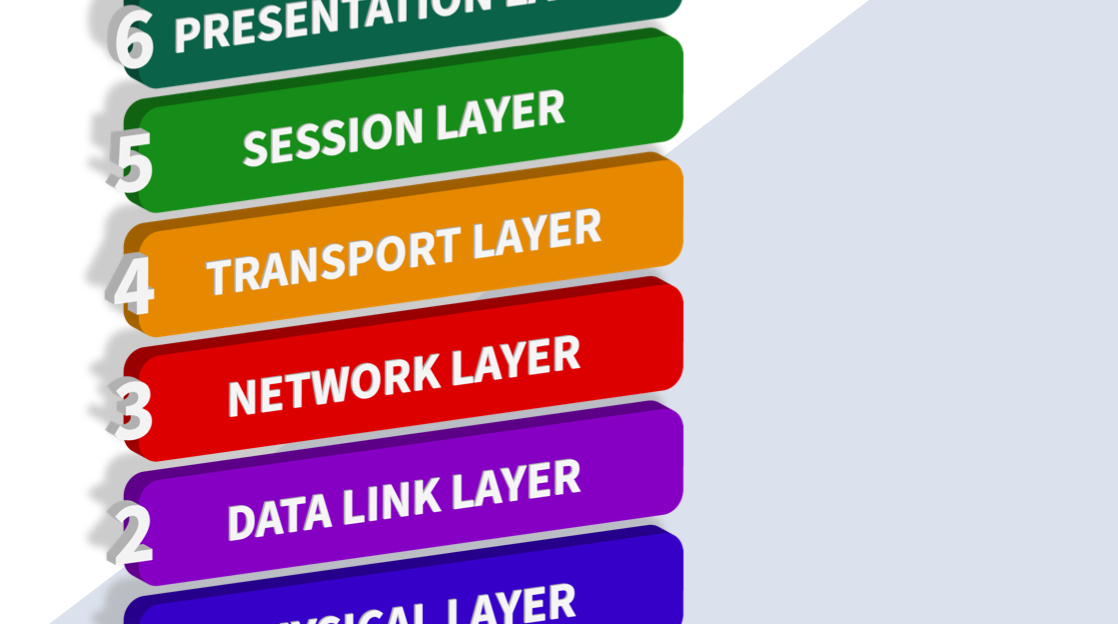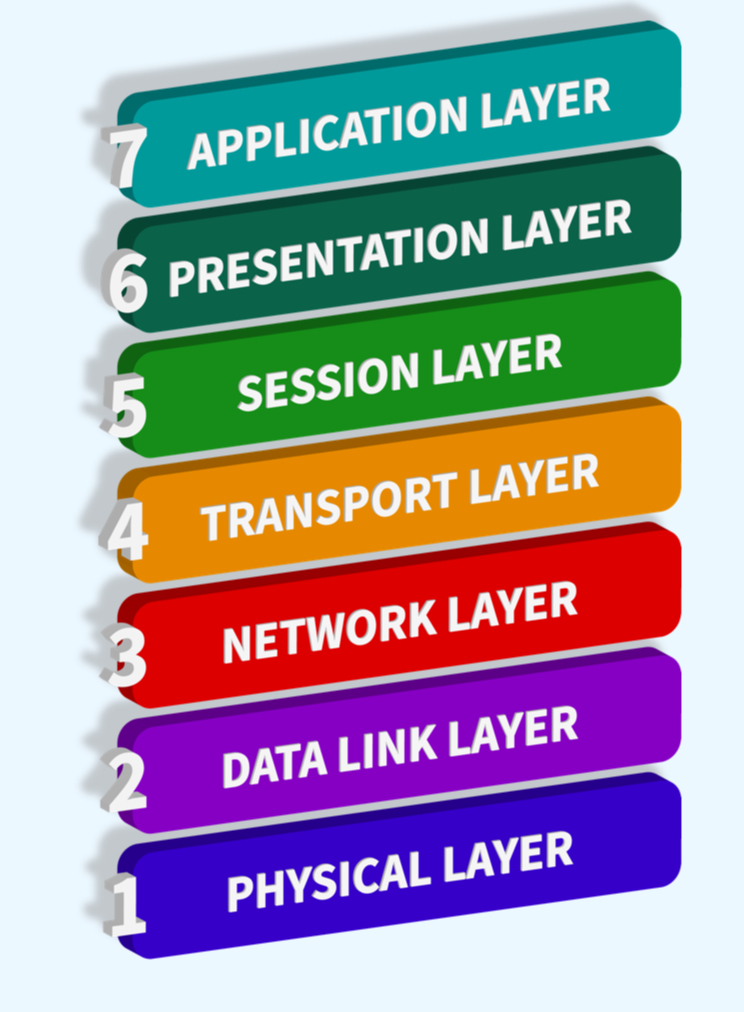What are OSI Model Layers? Understanding Network Functions

Quick Definition: The OSI (Open Systems Interconnection) model defines a conceptual framework with seven distinct layers, each serving a specific function in network communication. The OSI model provides a standardized reference for understanding how network protocols and technologies operate, making it a fundamental tool in networking and communication.
Raise your hand if you've ever felt totally lost while trying to understand how networks are built and what their underlying structure looks like from a technical perspective. All those acronyms flying around – TCP, IP, OSI...it's like a tech Jenga tower! The good news is that the OSI model is not that difficult to understand once we break it down into its seven individual layers and see how it provides stability and order to this complicated world of networking.
The OSI model is like an assembly line with many parts working together but for network communications. By splitting up all the complex tasks needed to move data from Point A to Point B, the OSI model gives us a standardized, interoperable framework that network engineers worldwide rely on daily.
In this article, we'll focus on Layers 4-7 - the Transport, Session, Presentation, and Application layers. We’ll review each layer's role in handling network traffic so you can start demystifying concepts like ports, protocols, and more.
What are the OSI Model Layers?
The OSI model contains seven layers that work together to facilitate network communication.
Layer 1: The Physical Layer transmits raw bit streams over physical media like network cables.
Layer 2: The Data Link Layer then packages these bit streams into frames and handles node-to-node delivery on the same network segment.
Layer 3: The Network Layer addresses and routes data packets across multiple networks.
For more details on the lower three layers, check out our article on understanding OSI model physical layers.
What is Layer 4: The Transport Layer?
The Transport Layer is responsible for end-to-end transmission and error-checking to ensure that the delivery of data is complete during data transfers. The Transport Layer manages the segmenting of data into packets and reassembling them correctly at the destination.
Flow control, sequencing, and error checking are key functions of the Transport Layer. It provides reliable transmission of data between hosts using protocols like TCP and UDP. The Transport Layer builds on the lower layers to reliably get segments from source to destination over multiple networks.
What are TCP and UDP Protocols?
TCP (Transmission Control Protocol) and UDP (User Datagram Protocol) are two main protocols that operate at the Transport Layer. We can think of TCP as a provider of reliable, ordered delivery of data through features like flow control, segmentation/reassembly, error checking, congestion control, and retransmission of lost packets. This ensures that all transmitted data arrives intact at the destination. TCP establishes a connection between the source and the destination.
UDP, on the other hand, does not guarantee delivery or packet order and is considered “connectionless.” All this means is that UDP doesn’t need to wait for a connection to be established before it starts transmitting data. UDP is faster and more efficient for things like video streaming, where some lost packets are acceptable, making the applications that use these transmissions responsible for monitoring the integrity of the data, and not the protocol itself. Together, TCP and UDP help make data delivery more reliable when needed (TCP) or provide a performance boost for loss-tolerant applications (UDP) at the Transport Layer.
What is Layer 5: The Session Layer?
The Session Layer manages the communication between two applications (either on the same host or across the network), and it establishes and terminates the sessions. The Session Layer coordinates and synchronizes their interactions and allows different applications to talk to each other, bringing much-needed order to a complex series of communications!
This synchronization enables applications to exchange data seamlessly. A good way to think about the Session Layer is that it facilitates ongoing communications from the beginning to the end of a transmission and allows the session to close gracefully once complete.
What is Layer 6: The Presentation Layer?
The Presentation Layer handles data formatting, conversion, encryption, and compression to prepare information for transmission from the Application Layer. This layer is responsible for translating data into standardized formats that the receiving system can understand.
Specific functions at the Presentation Layer include data encryption and decryption for secure transmission.
It also uses compression algorithms to reduce the size of data being sent, while character code translation converts data from one character set to another. By handling all of these different formatting tasks, the Presentation Layer allows the Application Layer to focus on core application functionality. It ensures data is presented in a usable way to the network layers below it.
What is Layer 7: The Application Layer?
The Application Layer sits at the top of the OSI model stack. It interfaces with software processes and applications, providing access to network services. This layer also handles issues like identifying communication partners, determining resource availability, and synchronizing communication. Key application layer protocols include HTTP, FTP, SMTP, and DNS.
These standard interfaces allow applications like web browsers, email clients, messaging platforms, and other networking software to utilize network resources. The Application Layer provides data to the Presentation Layer for any needed formatting before transmission and receives back formatted data from the Presentation Layer to pass along to the end application or process.
By separating the application functions from the intricacies of the network, software developers can focus on building tools, networked apps, and services independently at the Application Layer.
Conclusion
The different layers of the OSI model each serve a specific purpose that all work together to give us the modern network communication that we have all come to rely on. Even though we only focused on four of these layers in this article (Transport, Session, Presentation, and Application), the OSI model streamlines everything from troubleshooting to interoperability by breaking down the functions into their separate layers.
Together, these layers handle the tasks required for reliable data transmission step-by-step, from electrical pulses to end-user applications. For network engineers, administrators, and students, understanding the OSI model framework remains crucial for designing, managing, and debugging today's networked systems and technologies. This pioneering seven-layer model continues to provide an indispensable foundation for communication across platforms.
Want to take a deeper dive into the OSI model framework? Check out our Network+ Training Course, which covers the key concepts around this essential topic. Whether you need to refresh your knowledge of fundamental networking concepts or learn about the OSI layers from the ground up, this course has you covered.
Sign up for a free 7-day trial and get access to resources and courses plus hundreds more as you prepare for IT certifications and develop new skills!
delivered to your inbox.
By submitting this form you agree to receive marketing emails from CBT Nuggets and that you have read, understood and are able to consent to our privacy policy.
